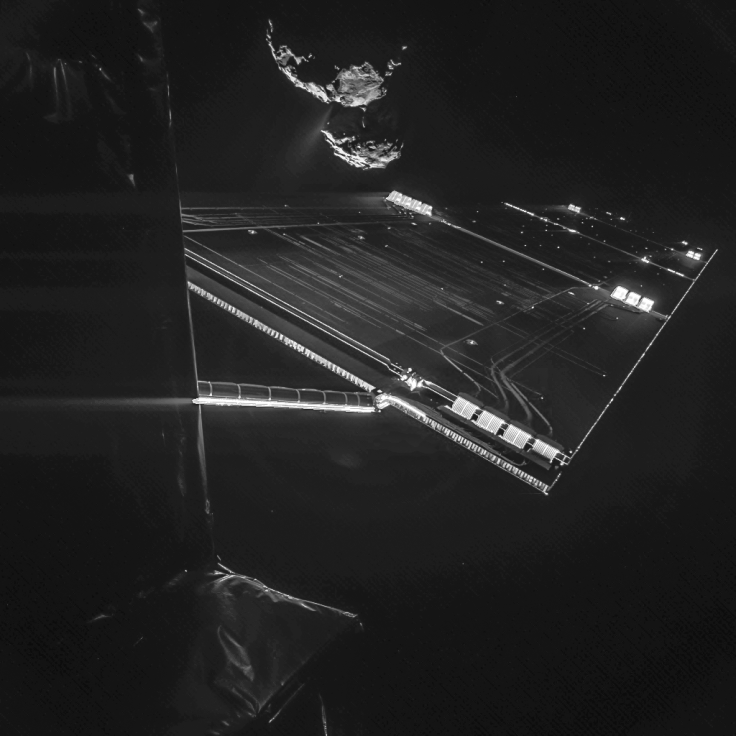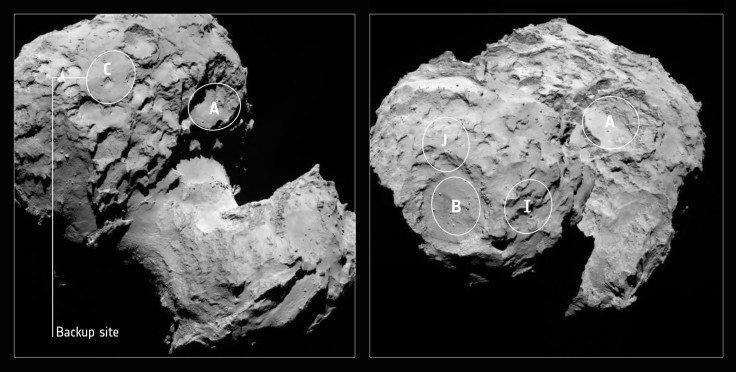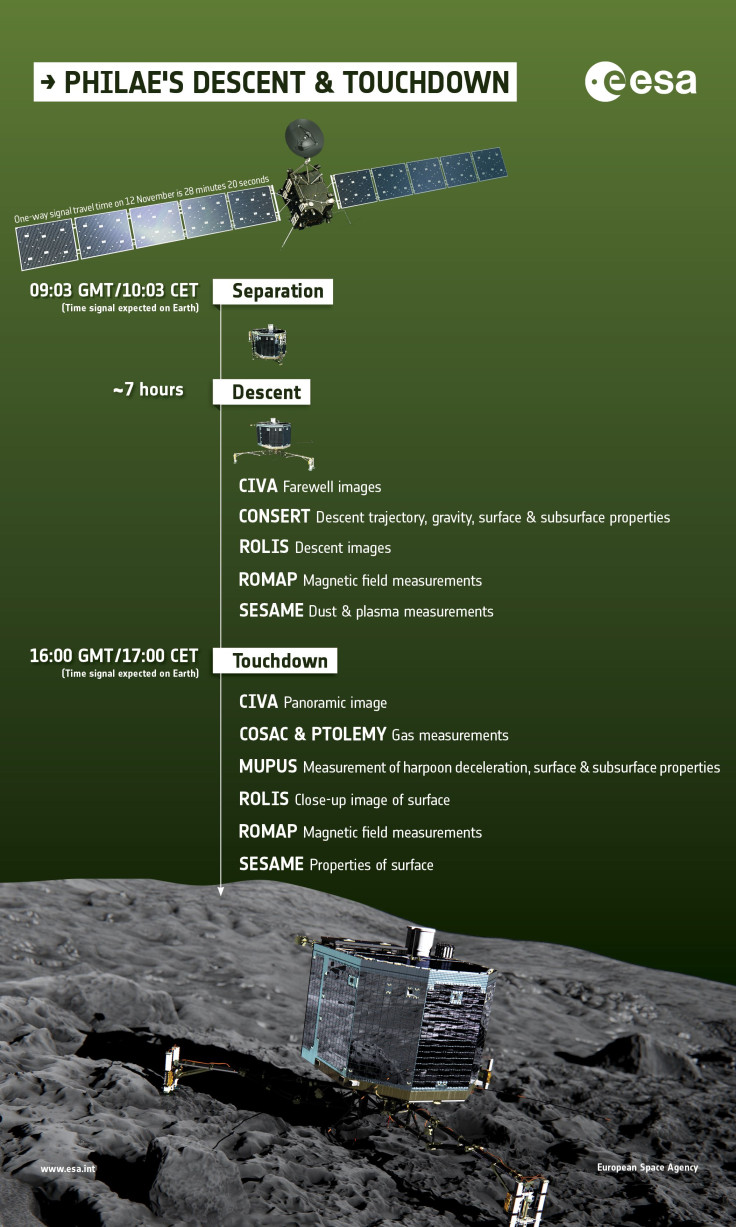Rosetta Comet Landing Live Stream: How Philae Will Be Deployed To Comet 67P/Churyumov-Gerasimenko

The European Space Agency's decade-long Rosetta mission has already completed several milestones, including a rendezvous with Comet 67P/Churyumov-Gerasimenko over the summer. The second phase of the historic mission is set for Wednesday when the Rosetta spacecraft is scheduled to dispatch a smaller vessel, named Philae, to land on the comet.
That's no easy task; it will be the first soft landing on a comet. Here's a primer on how the team will land Philae. The ESA will provide a live stream that begins at 2 p.m. EST on Tuesday leading up to the big moment.
Landing anything on a comet requires massive amounts of calculating, and re-calculating. The process has been more than a decade in the making, and before Philae could land on Churyumov-Gerasimenko, the ESA had to get its Rosetta spacecraft into position around the comet. Rosetta was launched March 4, 2004, and after four gravitational maneuvers, the spacecraft was in position to wait for the comet. The ESA put Rosetta into a virtual hibernation in June 2011 and had to do an incredibly difficult thing, wait for nearly three years with no communication from the spacecraft.
It was possible that Rosetta would not wake up from its three-year space nap, but everything worked out and Rosetta was back and operational in January 2014. All the careful planning just to get to this point was simply the beginning of the mission. Even more challenging was the next step, coordinating a rendezvous with the comet, which was successfully done in August.
Now Rosetta is trailing the comet as it circles the sun. The spacecraft has collected a lot of data on the comet over the course of three months, including how it smells and even its "song" based on variations in its magnetic field.
For the lander mission, ESA engineers had to select a landing site and once again plot the right trajectory that would safely land Philae on Site J, now named Agilkia, a relatively flat piece of real estate located on the "head" of the peanut-shaped comet.

On Tuesday, ESA will perform a final orbit determination that will be used to plan the spacecraft's thruster burn to position Rosetta so that Philae can land on Agilkia. Ahead of that landing, the Flight Dynamics Team at the ESA operation center will upload commands to Rosetta and Philae for the final maneuvers. A series of health checks on the spacecraft and the lander will take place before the final thruster burn.
On Wednesday, the Philae Control Team will have to wait for confirmation of two critical parts of the mission. The team will have to wait 28 minutes until it can determine if Philae separated from Rosetta and another 37 minutes to find out if Philae successfully landed on the comet. Once on the comet, Philae will drill into Churyumov-Gerasimenko and record the first images from a comet's surface.

ESA will update its progress and the important moments leading up to Wednesday as part of its Philae comet landing live stream, which begins at 2 p.m. EST Tuesday. The broadcast will include a look at the scientific instruments aboard Philae and how the team will track the lander once it's deployed.
Philae is expected to land on the comet at 10:35 a.m. EST, Wednesday, with the confirmation coming at 11:02 a.m. EST, on Wednesday, said NASA.
© Copyright IBTimes 2024. All rights reserved.






















